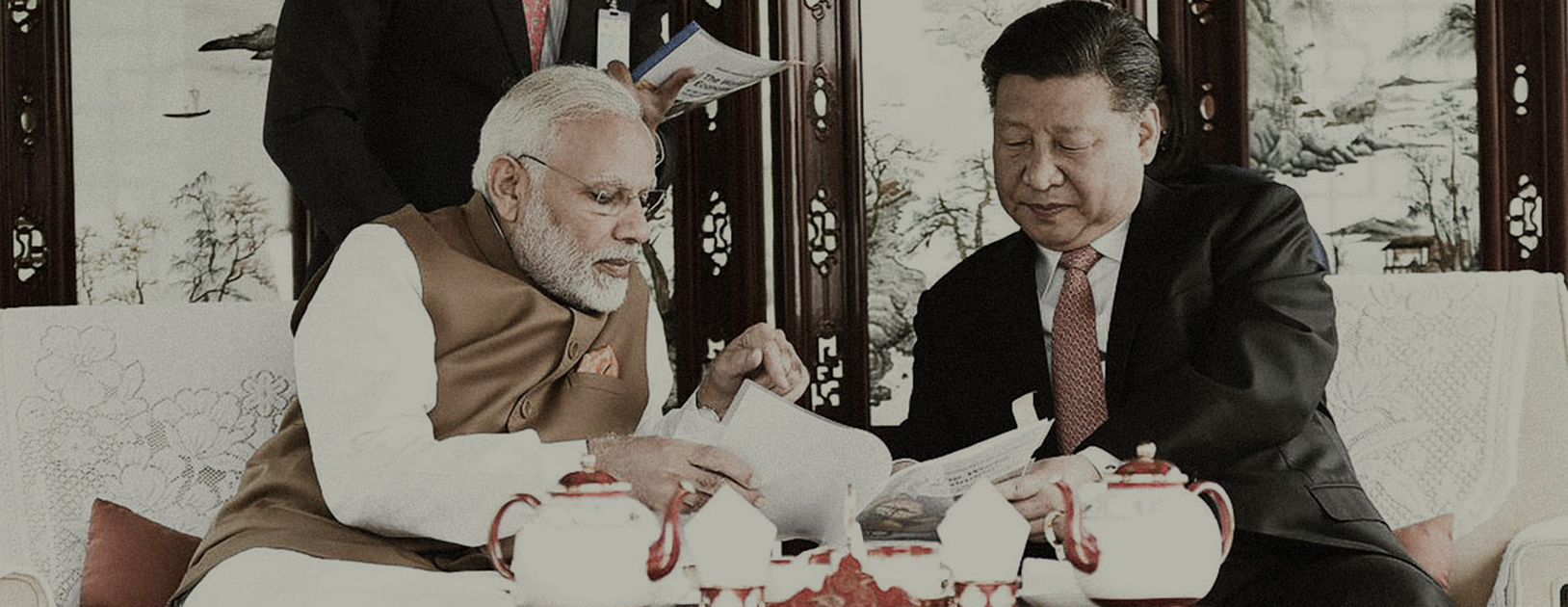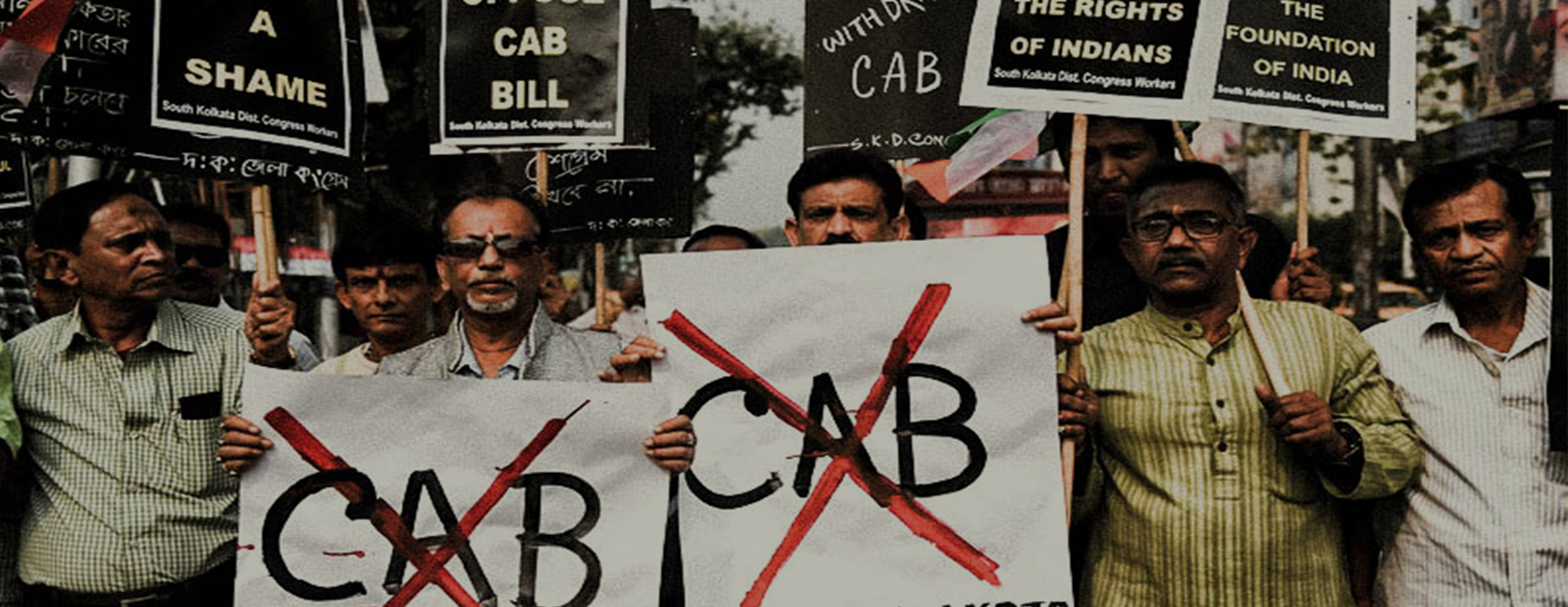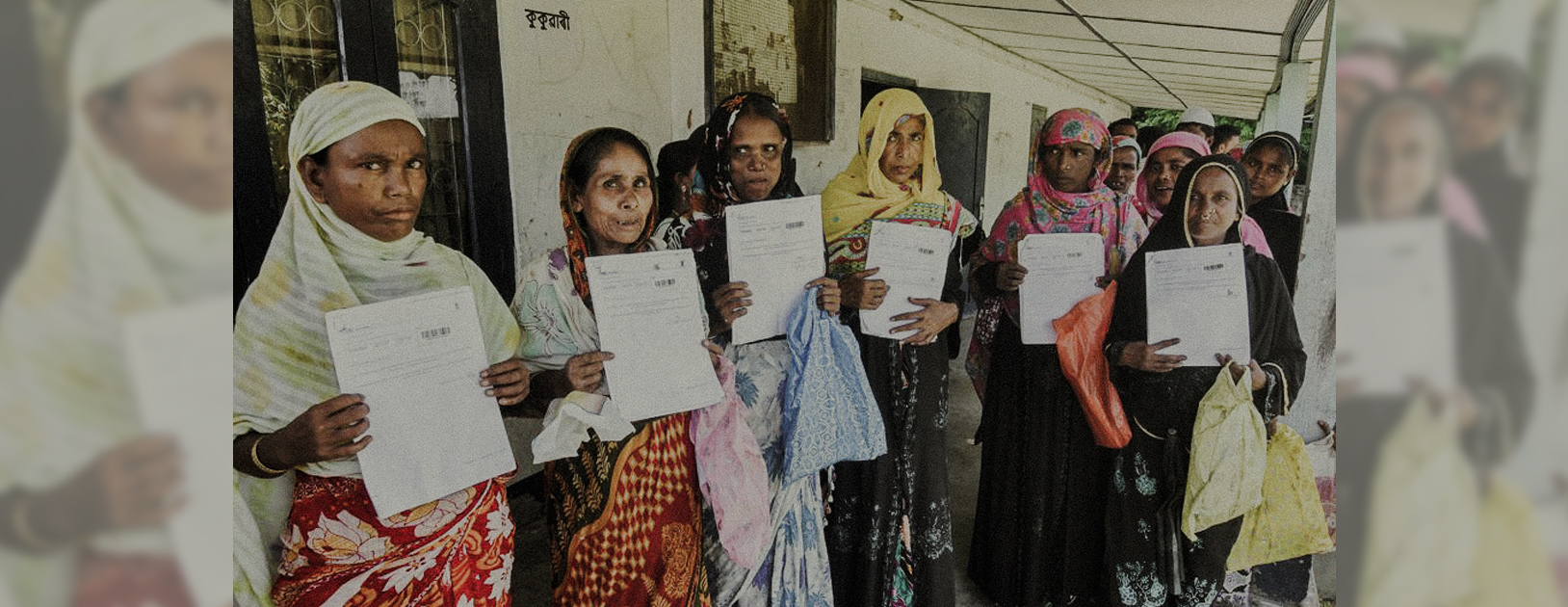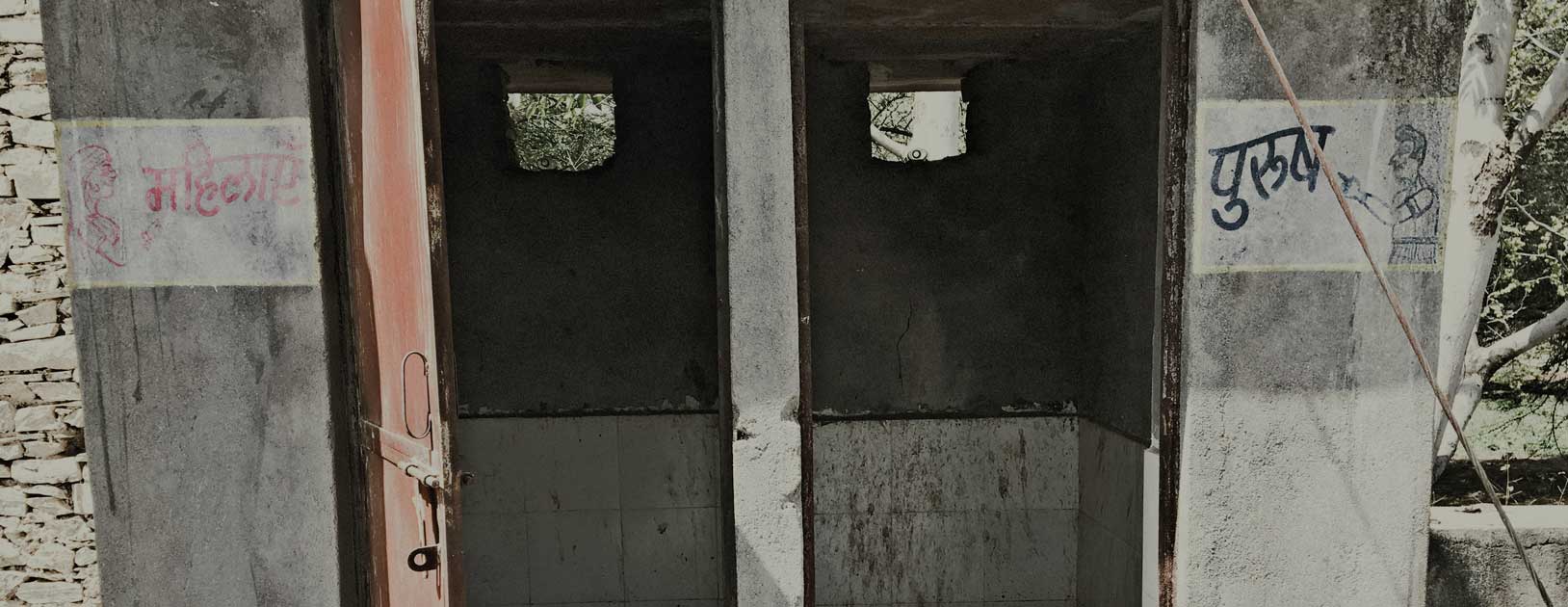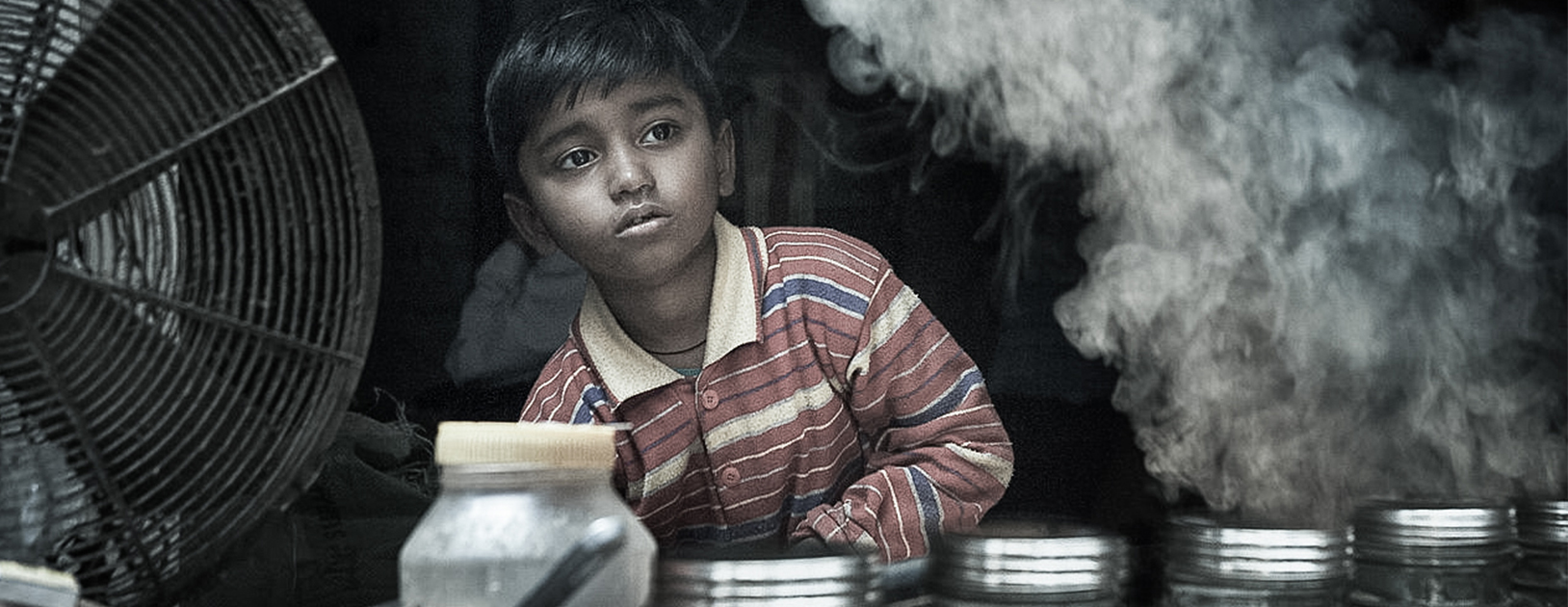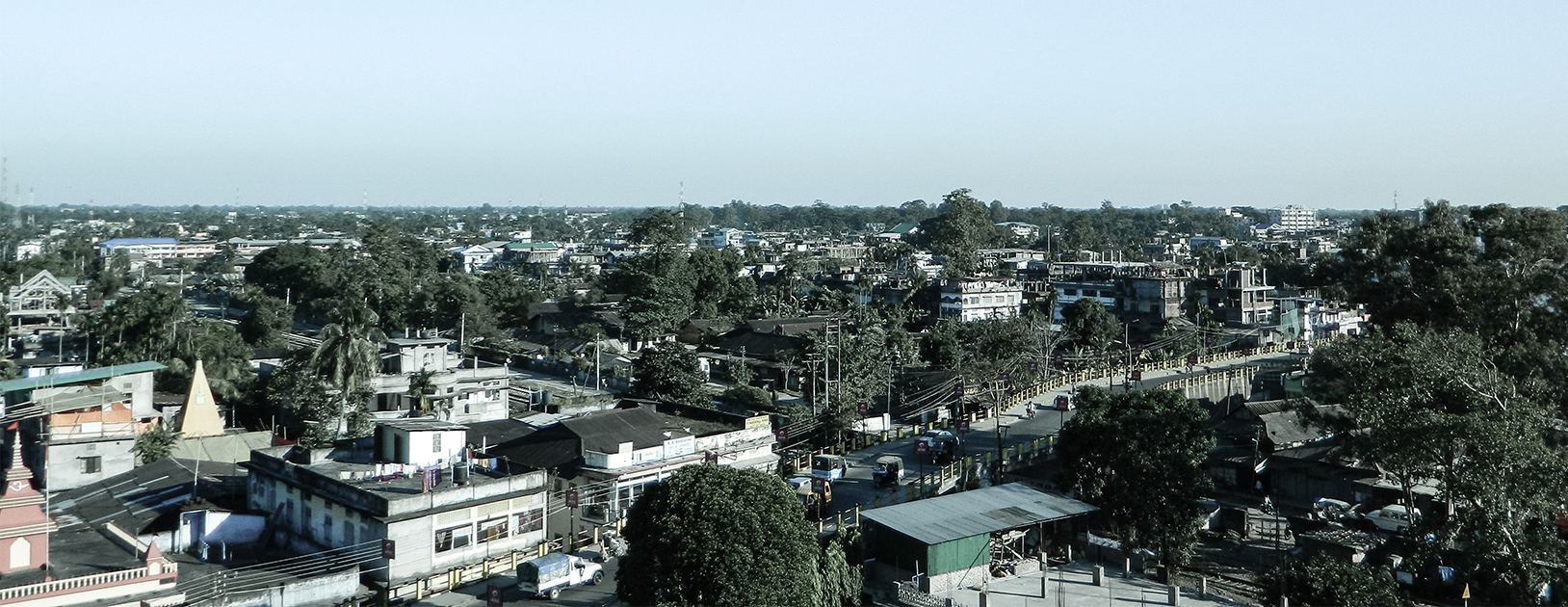The Upper and Lower Houses of the Indian Parliament recently passed the The Citizenship Amendment Bill (CAB). The Bill seeks to fast track citizenship for persons belonging to specified minority communities, namely Hindus, Sikhs, Jains, Parsis and Christians from a specified list of neighbours – Afghanistan, Bangladesh and Pakistan. The passing of the Bill led to protests across the country, particularly in the northeast. In this curated media commentary below, scholars at CPR unpack the Citizenship Amendment Act (CAA), examine reasons behind why it is being met by such opposition and shed light on what the Act means for notions of citizenship and who is an ‘Indian’.
Sanjib Baruah writes in Frontline about how the CAB marks a historic departure from India’s long-standing disavowal of the Two Nation Theory – the narrative behind the creation of Pakistan. Baruah highlights that the CAB radically changes the meaning of Indian citizenship and introduces a distinction between Hindu and Muslim immigrants crossing Partition borders.
Sanjoy Hazarika writes in The Quint about how the CAB’s ad hoc approach ignores complexities, calling for introspection, immense patience and dialogue. Hazarika underscores that the Bill ‘scraps’ the 1985 Assam Accord, an agreement that brought an end to a six-year agitation, which had taken thousands of lives, disrupted the economy, and toppled several state governments.
Sanjoy Hazarika writes in Outlook India about why Assam and adjoining states in the northeast have erupted in protest against the CAB. Hazarika points that much anger was simmering after the National Register of Citizens (NRC) in Assam turned up an ‘excluded list’ of 1.9 million (majority of whom were Hindu and remain unsure of their future). The CAB appeared to be dismissive of Assam’s concerns with several fearing that granting citizenship to people who have come illegally over the decades from Bangladesh, Afghanistan and Pakistan could change the state’s demography. Hazarika questions the possibility of the CAB triggering violence against minority groups in other countries whom India seeks to protect, highlighting that ‘asserting the trinity of liberty, equality and inclusivity could help even at this very late hour’.
Sanjoy Hazarika writes in CNBCTV18 analysing the situation in Assam. He points that while the CAB and NRC are different exercises and will be rolled out that way in other parts of the country – the same isn’t true for Assam or other northeastern states. Hazarika writes that ‘the doors to dialogue must be kept open and those opposing the government and its plans must do so peacefully, constitutionally and democratically’.
Neelanjan Sircar writes in Hindustan Times about the similarities between today’s Bharatiya Janata Party (BJP) and the Congress under Indira Gandhi in the 60s and 70s. Sircar highlights that while the BJP looks like it will be in control for the foreseeable future, politics can change in a moment’s time, with one rarely seeing the downfall coming. He writes, ‘when people are angry and frustrated enough, no amount of social control can hem them in’.
Yamini Aiyar writes in Hindustan Times about how India is weakened when secularism is threatened, threatening the country’s multiple identities. She writes, ‘the real challenge that protests and resistance to the CAA and NRC face today is that they are bereft of a vocabulary to defend secularism’s cause even though it is the threat to secularism that sparked these protests’. Aiyar stresses on the urgent need for India to wrest and reclaim secularism, anchoring it in a new vocabulary that redeems its credibility.
In October 2019, Yamini Aiyar wrote in Hindustan Times about how given the import of the CAB, real resistance to the Bill necessitates a robust defence of secularism. She highlights that the failure of the Opposition to mobilise political resistance to the CAB is worrying, and has pushed secularism to the margins of our polity.
Sanjib Baruah writes in Indian Express about the experiences of other countries that had, in the past, adopted an ideology-driven refugee policy. Baruah however laments that ‘our country’s current snap, uninformed, and policy-illiterate style of law-making does not allow for learning from the experience of others’. He states that those protesting against the law have just fears founded on history and past accumulated experience.
Shylashri Shankar writes in Open, The Magazine how the CAA-NRC combine inflicts a deep wound on the Constitution’s fabric. She illustrates how the threat of these moves could play out by creating a fear psychosis among document-less Muslim citizens of India about their citizenship rights and about their ability to remain in their religion.
G Parthasarathy writes in The Hindu Business Line about how Pakistan can use the CAA to run down India in neighbouring Islamic countries and across its Indian Ocean neighbourhood. He highlights the need to acknowledge the adverse criticism from the media, think tanks and civil society organisations from across the world on developments in India, cautioning that ‘we should not take all criticism abroad as being deliberately, or maliciously, hostile’. He further stresses on the importance of ensuring that the population along the north-eastern borders are at peace with themselves and the rest of the country.
Citizenship (Amendment) Act: Some facts vs Mythbusters by Sanjoy Hazarika
Sanjoy Hazarika writes in The Economic Times about how answers given in government statements regarding the CAA have only muddled waters. While the government’s effort at reaching out those opposing the legislation is important, Hazarika writes, ‘this should have been done much earlier, when the build-up of support and opposition to the Act was clear’.
In an episode of The Big Picture by Hindustan Times, Sanjoy Hazarika highlights reasons behind why the CAA has been met with sharp resentment in the northeast.
In an episode of The Big Fight by NDTV, Yamini Aiyar analyses the goverment’s reaction to the protests against the CAA and NRC. She highlights that the state as an entity has always had a monopoly over violence but India holds on to its democracy very closely and dearly, and hence whenever the state pushes the envelope and uses violence, people come out on the street to protect their rights. Aiyar says that this is a testament to both democracy and to the insecurity of the state. She further cautions that playing with the secular core of the country will result in deep division.
In an interview with Rediff.com, Sanjoy Hazarika sheds light on the fears of the northeast with respect to the CAA. Hazarika says, ‘the reaction to CAA is the resentment of people that they really have not been consulted on this, that their concerns have not been taken into consideration’. He further says that the government must never close the door on dialogue.
Yamini Aiyar writes in Hindustan Times several states are opposing the CAA, thus taking a stand against the BJP’s majoritarian push. She calls the protests against the CAA-NRC combine ‘a reclamation of India’s pluralism’ and highlights that ‘it is through this reclamation that India’s federal aspiration is witnessing a resurgence.’ Aiyar however cautions that these early signs of resurgence must be viewed with cautious optimism. She analyses that the BJP is likely to harden its ideological stance and deepen its centralising instincts in the fiscal and administrative arena, leaving states with little room for manoeuvre, given the resistance it is facing. Further, ‘states will have to take a principled stance against the BJP’s attempts to consolidate majoritarian identity, and articulate a convincing ideological alternative anchored in federalism and secularism even as it risks vote banks.’
Rajshree Chandra writes in The Wire about Jaggi Vasudev Sadhguru’s defence of the CAA-NRC combine. She highlights that his speech contained several untruths and writes ‘he missed facts, history and law, and he missed their connections. But above all he missed what he beseeches us all to have – compassion.’ Chandra goes on to explain why the CAA and the NRC are discriminatory and highlights, ‘for someone who understands the law so insufficiently, Sadhguru really treads where angels fear to tread.’
Asaf Ali Lone writes in The Wire, examining the CAA-NRC combine through the lens of urbanisation, highlighting the intersection between identity, spaces, religion and politics. He writes, ‘the processes of ‘partition’ are witnessed in the everyday life of the ordinary Muslim resident of the city when a building, street, language, ritual or attire becomes associated exclusively with Muslim identity’. Lone highlights how the CAA and the NRC represent the lethal move to make India a Hindu rashtra, by weeding out Muslims. He further writes, that much depends on the ‘Hindu’ majority – whether it will say yes to a majoritarian consensus or not as the state cannot rule without it.
Shyam Saran writes in The Tribune about how the constitutional benchmarks India had set for itself are being questioned, derided and violated. He highlights that the CAA ‘announces an imagining of India starkly different from what the Constitution envisioned.’ Saran writes that ‘the alternative imagining of India is a country that privileges the adherents of the Hindu faith. It is based on the as yet untested assumption that an overarching Hindu identity, ranging across sectarian, caste, regional and linguistic differences can be constructed on a Hindu-Muslim binary.’ He highlights that government action must imbibe the spirit of the Indian Constitution, in the same spirit as the government’s slogan of ‘Sabka Saath, Sabka Vikas, Sabka Vishwas’.
Neelanjan Sircar writes in Hindustan Times how the protests against the CAA-NRC combine have crossed a threshold and acquired a mass character, which will lead to an economic impact, raising problems for the BJP. He highlights how Internet shutdowns and curfews cripple basic economic activities. Additionally, the costs of stationing police, paramilitary and military forces are very high. Sircar also points to the indirect costs that are more severe, which include a decrease in investments due to an unfavourable sentiment. He writes, ‘the ruling dispensation will need to start negotiating with its citizens, rather than ramming through big bang reforms, backed by repression.’
Shyam Saran writes in The Tribune about the incident in the Regional Passport Office, Chandigarh, where an official demanded ‘citizenship certificates’ of two young applicants as he thought they ‘looked Nepali’ and hence may not be Indian citizens. He observes that the citizenship prerequisite is being taken to an absurd level. Saran highlights that the State, in a democracy, has no right to make its citizens abject supplicants for what is their inherent right and thus cannot, in effect, put in place a system which in its practice puts the burden of proving citizenship on the citizen himself. He calls this an abdication of responsibility by the State. Saran calls for a genuine dialogue between the government and political parties, civil society, students and other segments of society to understand the widespread concerns that the recent legislation.
Sanjib Baruah writes in Indian Express about how ‘India’s new official narrative is, at complete variance with the understanding that has informed Indian foreign policy so far.’ He questions why India even bothered to intervene in the war of liberation if Hindus were equally persecuted in East Pakistan/Bangladesh both before and after it broke away from Pakistan. Baruah highlights that is not surprising that people in all three CAA-covered countries — including leaders of minority organisations — reject the new Indian narrative.
Yamini Aiyar writes in Hindustan Times about how through the protests against the CAA, secularism has found its way back into the public discourse as a constitutional value worth fighting for. She illustrates how ordinary individuals are finding ways to articulate what secularism means to them, on Delhi’s streets, giving the word a more robust meaning, one that has deep roots in everyday Indian life. Aiyar questions whether this spontaneous, protest-led reclamation of secularism holds the possibility of translating into a new politics, in the long term, especially given the failure of the Opposition to generate a new discourse around secularism and democracy. She writes, ‘what we are witnessing today is democracy in its truest sense. It may not disrupt the status quo immediately, but it holds the promise of a better future.’
Sharonee Dasgupta and Fathima M write in The Daily Star, an account of their visit to Shaheen Bagh, a place that has become synonymous with resistance against the CAA-NRC combine.They write, ‘the most striking feature is perhaps the peaceful nature of the protests. Women there are well-informed about what they want and they stick to it. Their fight is with the ideology of fascism, not with individuals.’ Dasgupta and Fathima highlight how Shaheen Bagh will be remembered for its strength, tolerance and the subversion of stereotypes associated with minorities. Calling their trip educational and an eye-opening experience, they point out that it was a fierce reminder of the tenets of our constitution and the strength of our womenfolk.
